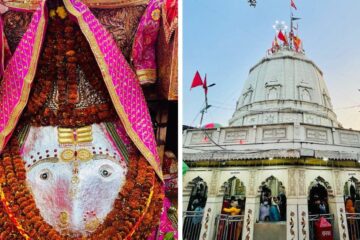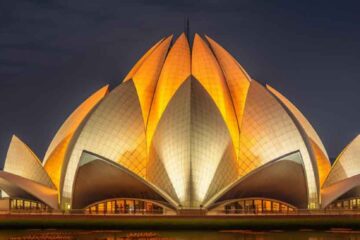National Museum of India

National Museum of India Delhi Entry Fee
- 20 per person for Adults
- 650 per person for Foreign Tourists (including Audio Guide)
- 0 Free entry for Students upto class 12th (with I-cards)
- 0 per person for Still camera
Videography is not allowed inside the museum
Handheld camera photography is allowed but for using photos permission has to be taken
National Museum of India, Delhi Timings
| Day | Timing |
|---|---|
| Monday | Closed / Holiday |
| Tuesday | 10:00 am – 6:00 pm |
| Wedesday | 10:00 am – 6:00 pm |
| Thursday | 10:00 am – 6:00 pm |
| Friday | 10:00 am – 6:00 pm |
| Saturday | 10:00 am – 6:00 pm |
| Sunday | 10:00 am – 6:00 pm |
The National Museum of India was established in 1949 and is one of the largest museums in India. It is situated in Delhi. For those who are passionate about history, archeology, and cultural heritage, the museum is a paradise. The National Museum of India, one of the largest museums in the country, houses approximately 2 lakh remains and fragments of prehistoric as well as contemporary artworks spanning nearly 5000 years. The Ministry of Culture and Tourism of the Government of India oversees and funds the museum.
History of the National Museum of India
Located between Janpath and Maulana Azad Road, on the periphery of Connaught Place, is the National Museum of India. In 1946, the Gwyer Committee laid the foundation for the National Museum of India. The museum is the result of a 1949 show that was successful and was also staged at Rashtrapati Bhavan and the Royal Academy in London.
The museum was opened by the then Governor-General of India, Shri Chakravarti Rajagopalachari and on May 12, 1955, by Pt. Jawaharlal Nehru laid the foundation stone of the museum. The building was opened to the public on December 18, 1960.
Institute in the National Museum of India
Established in 1983, the National Museum Institute of the History of Art, Conservation, and Museology is the museum’s in-house university. Since 1989, this university has been operating as a deemed university. The institute offers several doctoral and master’s programs in museum studies, conservation, and art history.
Departments at the National Museum of India
There are 16 departments at the National Museum of India which preserve strong heritage from the past. The departments are:
- Prehistoric Archaeology
- Archaeology
- Manuscripts
- Numismatics and Epigraphy
- Paintings
- Arms and armour
- Decorative arts
- Central Asian antiquities
- Pre-Columbian art
- Jewelry
- Anthropology
- Education
- Public relations
- Publication
- Conservation
- Display
These departments are based on and cover almost all types of artefacts and collections at the museum.
Collection Galleries at the National Museum of India
In addition to the departments, the museum has 21 collection galleries with preserved exhibits, artifacts and artifacts from different eras. Among these galleries are:
1. Harappan Gallery
This section contains various objects from the Harappan Civilization, sometimes also known as the Indo-Sarasvati Civilization and the Indus Valley Civilization. Sculptures and artefacts made of terracotta, bronze, ivory, semi-precious stones and bone artefacts can be found. Besides this, there is also jewelery and pottery.
2. Maurya, Shunga and Satvahana Arts Gallery
This gallery contains artefacts that date back to the 4th and 1st centuries BC. As the name suggests, Maurya, Sunga and Satavahana are the three dynasties that controlled this gallery. The objects present in this gallery contain objects that depict the life of Buddha.
3. Kushana Gallery
The Kushan dynasty ruled from the 1st to the 3rd century. During this period, the famous Gandhara school of art and the Mathura school of art were quite popular. Kushan galleries were greatly influenced by Greek iconography. The Kushan Empire is primarily known for its representations of the Buddha in human form.
4. Gupta Gallery
Under this dynasty, from 4th to 6th century BC. Texts and artefacts of the Gupta dynasty which ruled till 1750 are on display. The sculptures of Ramayana and Mahabharata are the most famous.
5. Medieval Arts Gallery
Early Medieval and Late Medieval are the two divisions that make up the gallery. The artefacts of various dynasties including Vardhana, Pratihara, Maitraka, Pala, Pallava, Chola and Chalukya in the early era and Paramara, Chandela, Hoysala, Nayala, Gajapati, Sen and Chauhan in the later era are mixed together. In the gallery. The future of the Indian subcontinent and its art suffered greatly after the fall of the Gupta dynasty.
6. Decorative Arts Gallery
This gallery also has two sections: Section 1 and Section 2. In Section 1, objects made of ivory, ceramic and jade are found. Wood and metal artefacts can be found in Section 2.
7. Miniature Paintings Gallery
This gallery also has two sections: Section 1 and Section 2. In Section 1, objects made of ivory, ceramic and jade are found. Wood and metal artefacts can be found in Section 2.
8. Buddhist Artefacts Gallery
Remains of the fifth and fourth centuries BC are preserved in Siddharth Nagar, Uttar Pradesh. Terracotta, bronze, stone, plaster and wood make up most of the objects. Hinayana, Mahayana and Vajrayana are the three main schools of Buddhism. These objects focus on the concept of humanity.
9. Evolution Of Indian Scripts And Coins Gallery
The slide show shows how Indian coin systems and scripts have evolved. Specimens representing different historical periods are housed in huge exhibitions.
10. Bronze Gallery
This gallery houses bronze sculptures of Nataraja, Parshvanath, Chaubisi and other figures.
11. Manuscripts Gallery
This section houses a collection of manuscripts and scripts from different eras and languages. The texts are written on a variety of surfaces, including parchment, metal, paper, birch bark, and palm leaves.
12. Coins Gallery
This collection is a perfect illustration of both modern and old methods. The slideshow shows how the coinage system has changed over time, starting from the cowrie to the credit/debit card.
13. Central Asian Gallery
Between 1900 and 1916, Sir Aurel Stein made several trips along the Silk Route, during which he found these antiquities. A variety of wall paintings, silk banners, sculptures made of wood, clay and grass, as well as artefacts made of leather, fibre, gold and silver are on display.
14. Maritime Heritage Gallery
The collection includes Maratha naval tactics and maritime displays.
15. Tanjore And Mysore Paintings Gallery
Many artworks from the two famous southern Indian schools of Mysore and Tanjore are featured. The items are categorized according to Indian mythology, including gods and goddesses, epics, etc.
16. Textiles Gallery
The section under this heading presents examples of Mughal textiles. The textiles displayed include silk, cotton, wool, prints, dyes, embroideries and more.
17. Pre-Columbian And Western Art Gallery
The objects in this gallery were given by the aristocratic Hiramneck family of New York. Items from many countries such as Peru have been revived. Peru, Panama, Maya, Salvador, etc.
18. The Tribal Lifestyle Of North East India Gallery
Dedicated to the eastern lifestyle of India, the gallery was established and today houses objects from eight eastern states, or seven sisters and one brother (Sikkim).
19. Sharan Rani Backliwal Musical Instruments Gallery
Indian sarod player Padmashree (late) Mrs. Sharan Rani Backliwal donated the collection to this gallery. This gallery containing folk, tribal and classical musical instruments is a center of attraction for music lovers.
20. Wood Carving Gallery
The collection features wooden artefacts that depict carvings from Tibet, Nepal and India, as the name suggests.
21. Arms And Armour Gallery
The collection represents weapons and armor from different times and periods, from the Stone Age to the modern era. The collection mainly consists of Mughal-era weapons and armour, although it also includes Rajput, Sikh, and Maratha weapons.
Entry Fee and Timings of National Museum of India
Adult Indians will have to pay Rs. 20 for entry to the National Museum of India; visitors from other countries will have to pay Rs. 650. No fee is charged for students in classes 1 to 12 who carry their ID card.
In the museum, taking photographs with handheld cameras is permitted, although permission is required. No additional camera fees are charged.
The museum does not allow videography.
The museum is open to visitors from 10:00 am to 6:00 pm every day of the week, except Monday.
How to Reach the National Museum of India
The National Museum of India is located on the outer circle of Connaught Place, which makes it quite easy to access.
By Metroline: If you are in Delhi, the most convenient mode of transportation to reach the National Museum of India is by metro. Udyog Bhawan is the nearest metro station, just 900 meters away from the museum.
By Road: If you are traveling by road, Delhi is well connected to most cities in India, being the National Capital. All buses come to ISBT Kashmiri Gate, from where you can take the DTDC line 40 to reach Udyog Bhawan, which is just 900 meters away from the National Museum of India. Private taxis are also available at the ISBT.
By Railways: If you are traveling by train from any part of the country, get down at the New Delhi Railway Station. You can hire a taxi cab from the railway station to the National Museum of India or travel by metro from NDLS to Udyog Bhawan, ride the yellow line, and get down at gate number 1 on Udyog Bhawan metro station.
By Airways: If you are traveling by air, Indira Gandhi International Airport is the nearest one. You can hire a private taxi from the airport to reach the National Museum of India. Alternatively, you can opt for a private cab from top car rental companies in Delhi for hassle-free commutation during your stay in Delhi.



4 Comments
Raj Ghat, Delhi: Information, History, Timings, Entry Fee · February 20, 2024 at 5:39 pm
[…] National Museum of Natural History (3.7 km) […]
Jantar Mantar, Delhi: Information, Facts, Timings, and Entry Fee · February 21, 2024 at 3:54 pm
[…] National Museum (2.3 km) […]
Rashtrapati Bhavan, New Delhi: Information, History, and Timing · February 22, 2024 at 4:12 pm
[…] National Museum (1.5 km) […]
Best Unique Themed Cafes In Delhi/NCR To Explore · February 24, 2024 at 5:35 pm
[…] is the epitome of a Greek island, with its rustic appeal and white-blue decor. Diners can taste Mediterranean cuisine while enjoying a casual […]